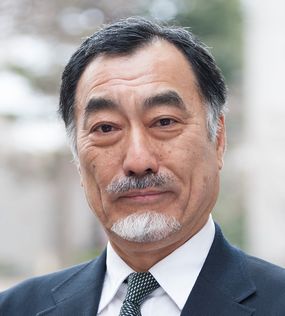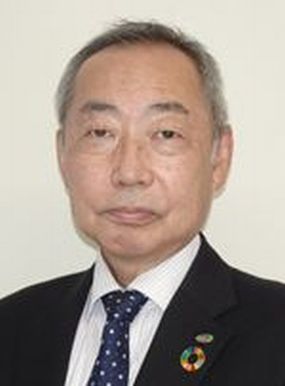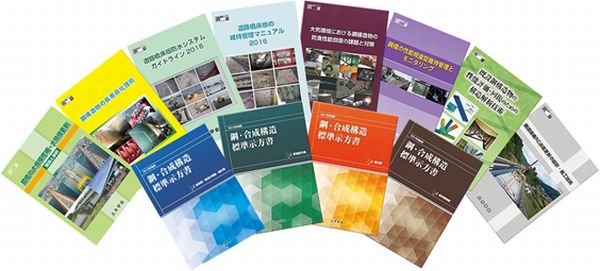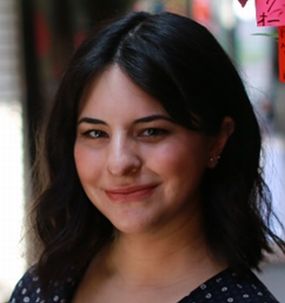IAC News
IAC News No.99, January 2021
Japan Society of Civil Engineers International Activities Center January 12, 2021 IAC News No.99
Japanese Crises and the Future of Civil Engineering ‐ from the Perspective of Our Origins and Culture – (2/3)
Prof. IEDA delivered a Presidential Speech at the 2020 JSCE Annual Meeting. The IAC News introduces the speech from this issue to No.100.
<In the No. 98 isseue, the essay discusses that we the society is facing three inherent crises, and in order to overcome them, we should let ourslves conduct internal self-assessent and self-transformaiton based on the inherent sense of urgency, thinking from the origins of civil engineerig.>

Prof. Dr. Hitoshi IEDA
108th JSCE President
■ Comprehensive Approach, Bricolage Ability, Openness and Tolerance
On the other hand, the following 4th, 5th, and 6th points are considered to be the ‘origin of civil engineering’ in terms of one’s individual mentality.
The fourth point is that a ‘comprehensive approach’ is required. I will discuss this later.
The fifth is ‘bricolage ability’ in an active sense. The original meaning of the word ‘bricolage’ refers to ‘a sloppy piece of work’ using ‘what is available’, however, here I use it in its positive sense as LEVI-STRAUSS used. Although responding to disasters are a typical situation, given the limited information, resources, and time, we must promptly find the best possible measures and implement them boldly, while making choices and compromising. Such situations are extremely common in the world of civil engineering, and the true capabilities of civil engineers are called into question.
The sixth is ‘openness and tolerance’ in an intellectual sense. Intellectual openness, in which one does not define the outer limits, and tolerance of other fields are the most fundamental elements that are essential for demonstrating the fourth point, ‘a comprehensive approach’, and the fifth point, ‘bricolage ability’. The idea that ‘from what point constitutes civil engineering and from what point is no longer civil engineering’ does not lead to novel and dynamic ideas and activities. Not to mention the idea of creating a fence around oneself and confining oneself to the framework of one’s specialty is not what civil engineering is originally all about. Among these, the importance of the fourth point, ‘a comprehensive approach’, was emphasized by the first president, Prof. FURUICHI, in his president address. To quote, “It is natural to feel the need for specialized division of labor, so-called specialization, as civilization progresses. However, one should give great caution to being bound by the words specialized division of labor and becoming atrophic.” Subsequent presidents have often made similar appeals. However, the fact that this has been repeatedly emphasized also means that the ‘comprehensive approach’, which can be said to be one aspect of the ‘origins of civil engineering’, is an ideal that is difficult to achieve if it is just a vague idea, and that, in fact, it is not a simple ideal. I determine the ‘comprehensive approach’, ‘bricolage ability’, and ‘openness and tolerance’ to be a set of three, and I think it is important to consider this collection of elements as the ‘origin of civil engineering’ in terms of mentality. In other words, if the ‘comprehensive approach’ is the origin during normal times, it is the ‘bricolage ability’ in times of emergency that it forms a pair with, and ‘openness and tolerance’ support them both as a foundation.
■ From the Perspective of the Organizational Culture of the Civil Engineering Industry
In ensuring this ‘openness and tolerance’, one ‘key’ is the ‘curiosity and education’ of each of us. Meanwhile I think the other key is the ‘diversity of values’ in organizations and societies, or an ‘open-mindedness’ to accept diverse values.
When that happens, we must look at the ‘organizational culture’, that is, the value system that implicitly defines what we value and how we act within an organization, of the civil engineering industry on which we stand. So what is the organizational culture of Japan that surrounds us in the civil engineering industry?
The first thing that comes to mind is Hajime NAKAMURA's ‘The Ways of Thinking of Japanese People’ (one of the masterpieces of ‘Ways of Thinking of Eastern Peoples’). From the 1960s to the 1970s, Chie NAKANE, Takeo DOI, and Shichihei YAMAMOTO clearly depicted the characteristics of organizational culture by using symbolic and slightly sensational terms such as “vertical society,” “mutual dependence,” “Japanism,” and “reading the air.” Recently, it is an organizational culture that Eiji OGUMA calls “membership-type employment” in his book ‘Structure of Japanese Society.’ From these works, if the basic characteristics are described in stereotypes, rather than the code of conduct of individuals, such as justice, ethics, and rationality, become universal values that exist (as beliefs) across organizations, it will be an organizational culture that places a loyalty to the matters and interests authorized by the organization to which one belongs, or to vertical relationships within the organization. Although I will omit a detailed explanation, it is characterized by the proper use of inside and outside, the monolithic nature of the organization, and ‘groupism’.
When we compare the organizational culture of the civil engineering industry with other academic fields and industries, it seems that the characteristics of this traditional Japanese organizational culture are quite strong in the civil engineering industry. In his address, Prof. Tokujiro YOSHIDA, whom I mentioned earlier, stated that “civil engineers work in close proximity to each other, which is something good and different from other fields.” It shows that our organizational culture has strongly oriented to the traditional organizational culture of Japanese society.
This kind of organizational culture without doubt also has some advantages. In up and overtake the West’, the groupist organizational culture was very successful and delivered results. Ezra VOGEL of the United States, whom I mentioned earlier, commented that this Japanese organizational culture is one of Japan’s best points and its strengths and that American society should also learn from it.
Even in modern times, for example, when a disaster occurs, the people of the local construction industry work together with the government to carry out recovery activities without any hassle. Such a spirit is a manifestation of our organizational culture. Of course, it is also effective when sharing a sense of urgency and engaging in a transformation. An accident in which ceiling panels of the Sasago tunnel fell occurred in 2012, causing a strong sense of urgency to be shared regarding infrastructure maintenance. Under the slogan of “the first year of maintenance” raised by the then Minister of Land, Infrastructure, Transport and Tourism, Mr. Akihiro OTA, structures were inspected all over the country for the next five years. These good points must be cherished in the future as well.
■ Diversity of Values and Organizational Culture
On the other hand, however, there are many elements that need to be changed. It may have been effective during the period of rapid economic growth, but many people hold the view that the cause of this subsequent ‘stagnation’ lies in the Japanese organizational culture. When considering the “origins of civil engineering” I mentioned a moment ago, I said that “openness and tolerance” are important, and that the key to this is “diversity of values” in society and organizations. So, when considering whether our organizational culture is suitable for promoting “diversity of values” within the organization and developing our set of values into a more fertile one, I think there is significant room for change. If ‘diversity of values’ ensures our ‘openness and tolerance’ and is the heart of vibrant development, then I think it is especially important to constantly reflect within our organizational culture so that it does not fall into excessive ‘groupism’ or ‘monolithism’, as well as to make drastic changes.
Regarding the relationship between organizations and individuals, Mr. Hideo KAYAHARA, the 96th president, gave an address entitled ‘Who built this?’ back in 2008, breaking away from the unknown collective aesthetics that underlie the civil engineering industry in Japan by stating that more light should be shed upon the existence and achievements of each individual engineer. I feel the same.
So far, I have described the two aspects: the origins of civil engineering and the organizational culture of civil engineering. Now, in order to overcome the aforementioned three intrinsic crises, I would like to talk about what should be developed and what should be changed within each of us and the organizations that surround us.
Committee on Steel Structures

Kazuyuki Mizuguchi
(The Chair of Committee on Steel Structures)
As of November 2020, 17 survey and research subcommittees are active.The results of the efforts of each survey and research subcommittee are mainly published as part of the Steel Structure Series, with the total number of volumes in this series reaching 33 thus far. Furthermore, the committee has formulated ‘Standard Specifications for Steel and Composite Structures’, aiming for competitive design standards that highlight Japan's presence in this field, and the permanent General Subcommittee on Standard Specifications for Steel and Composite Structures undertakes the production of these specifications in the form of a book. The book consists of four volumes: (1) ‘General Provision, Structural Planning, Design’, (2) ‘Seismic Design’, (3) ‘Construction’, and (4) ‘Maintenance’. The first edition of the book was published from 2007 to 2013.After that, each volume was revised in succession and the second edition of the book was published by 2019.
The ‘Subcommittee for Overseas Exchange’was established in 2007 for sharing, on an international level, information on Japanese steel structures, and in addition to introducing Japanese steel structure technologies to other countries, the subcommittee actively promotes technological exchanges with other countries, such as gathering information on steel structure technologies overseas.Recently, the subcommittee has cooperated in session proposals and providing keynote speakers at the JSCE-CCES Joint Symposium (2016, 2018), the Civil Engineering Conference in Asian Region (2019), and the Pacific Structural Steel Conference (2019).
In addition, as part of efforts to share information, the results of the Committee on Steel Structure’s hard work have been made widely available, with past edited publications and journals of the committee or its study and research subcommittees published as part of the JSCE electronic archives, making it possible to download them as files from the committee websit(http://library.jsce.or.jp/Image_DB/committee/steel_structure/index.html).
In addition, the Committee on Steel Structures holds a‘Symposium on Steel Structures and Bridges’once a year (held 23 times in total, from 2020, the event has been held under the name‘The Bridge Symposium’), a basic course on steel structures twice a year (held 39 times in total), a lecture conference on the succession of steel structure technologies once a year (held 8 times in total), and seminars to introduce the results of the survey and research subcommittees on an ad-hoc basis.In 2020, the year in which we faced the COVID-19 pandemic, all the events were held online, but nonetheless, we managed to attract a greater attendance than usual.
We will continue our survey and research activities to achieve safe and secure steel structures and will produce contents that shed light on the cutting-edge technologies and convey the appeal of steel structures.We would also like to deepen our exchanges with academic societies in the East Asia and Oceania regions and to scale our activities to create an East Asian code on steel and composite structures.

Revised Version of Standard Specifications for Steel and Composite Structures and
Steel Structure Series Published in Recent Years
To contribute to the development of science and technology related to steel structures in the field of civil engineering, the Committee on Steel Structures was established in 1971 from the Committee on Bridge Structures by dividing its functions into two with the Structural Engineering Committee.Since then, the Committee on Steel Structures has been engaged in activities such as surveys and research on steel materials and steel structures, holding seminars and symposiums, and planning and editing publications.
【Reported by Kazuyuki Mizuguchi, The Chair of Committee on Steel Structures
(East Nippon Expressway Company Limited) 】
Welcome to New Editor!

Ms. Luisa Santa Spitia, Ph.D.
First of all, I would like to thank you for the opportunity to be part of the IAC News' editorial team. It is a real privilege for me to be considered for this work, and I am happy to be able to represent foreign engineers in Japan. So, I would like to introduce myself to the readers of this newsletter, my name is Luisa Santa, I am a Colombian civil engineer. I arrived to Japan in 2014 to study my doctorate in geotechnics at the University of Tokyo. I have been working at Hazama Ando Corporation for three years now. As for my hobbies, I don't have much to mention since I am the mother of a beautiful 5-month-old baby that consumes all my free time. It is truly a challenge to be a mother and practice my profession at the same time, especially when my relatives are on the other side of the world. But that only makes things more interesting and the taste of duty accomplished is even sweeter. I hope to serve in this media to make visible the work of foreign engineers and civil engineering around the world. I feel excited and anxious to see what I can contribute and what challenges this new year 2021 will bring. Again, thank you very much.
Updates
-
IAC YouTube Channel
https://youtube.com/channel/UCGIs6DHrzX_cGD-mHUrRlkA -
17th World conference on Earthquake Engineering (17WCEE)
http://www.17wcee.jp/ -
The Second International Conference on Press-in Engineering (ICPE) 2021, Kochi: https://icpe-ipa.org/
-
9th International Conference on Experimental Vibration Analysis for Civil Engineering Structures (EVACES2021):https://ec-intl.co.jp/evaces2021/
-
9th Civil Engineering Conference in the Asian Region (CECAR9) in Goa, India(Sept 21, 22, and 23, 2022): http://www.cecar9.com/
-
jhappy - JICA’s Grant Aid Cooperation -
Facebook: https://www.facebook.com/jhappy20161110/
Twitter: https://twitter.com/jhappy_official -
The International Infrastructure Archives
– A Compilation of Japan’s Greatest Projects in Transfer of Civil Engineering Technology in Service –
http://www.jsce.or.jp/e/archive/ - IAC “News Pick Up!!” on the JSCE Japanese website
https://committees.jsce.or.jp/kokusai/iac_dayori_2021
- Summary of featured articles in JSCE Magazine Vol. 106, No.1, January 2021
http://www.jsce-int.org/pub/magazine
- Journal of JSCE
https://www.jstage.jst.go.jp/browse/journalofjsce
IAC News Subscription
The IAC News is one of the communication tools to share information and ideas with the members. We would like to invite you, your friends and colleagues to join the communication and to subscribe the IAC News. Please register online: (http://www.jsce-int.org/node/150). We look forward to meeting you.
